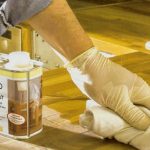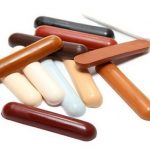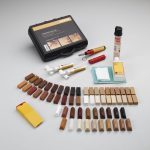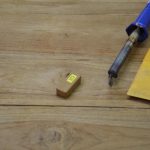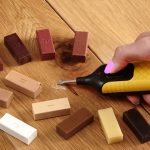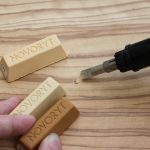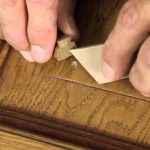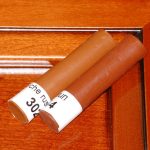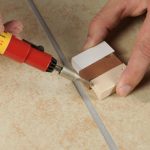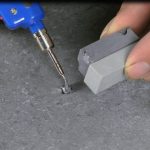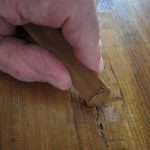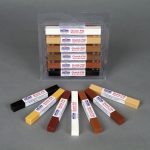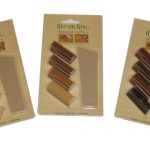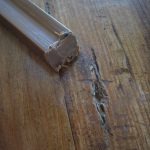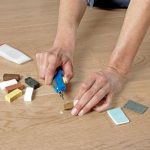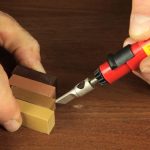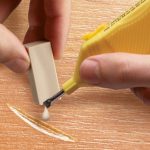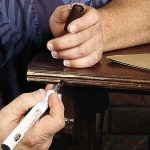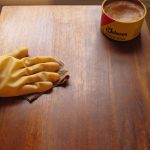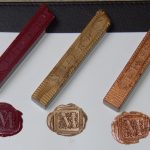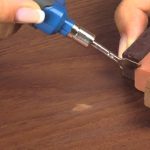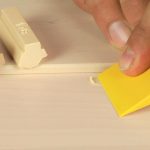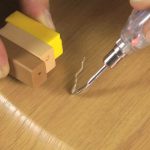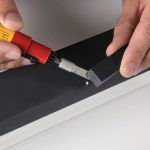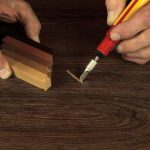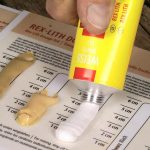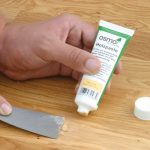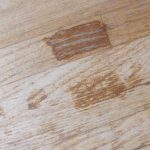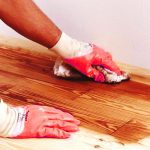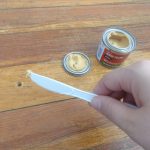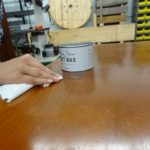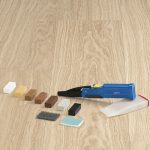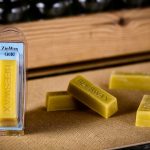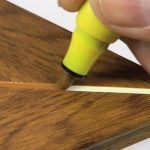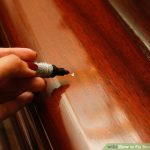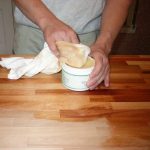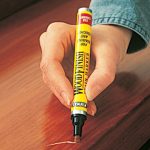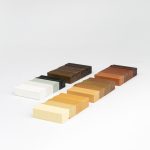 Keyboard with your own hands: from idea to realization
Keyboard with your own hands: from idea to realization
Furniture wax: types, application, how to use.
Cracks, chips and scratches may appear on furniture during moving or operation. Buying a new one sometimes does not allow finances, and sometimes it can be impractical because the furniture itself is in excellent condition. To help in repairing the damage will help professional tool - furniture wax.
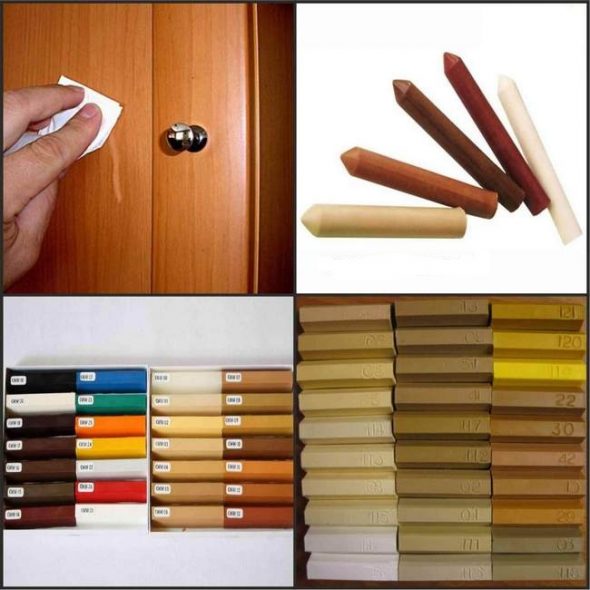
This material is used in its natural form or in the form of special mixtures.
This universal remedy, designed for the treatment of wooden products, can be used on both clean and laminated and varnished surfaces.
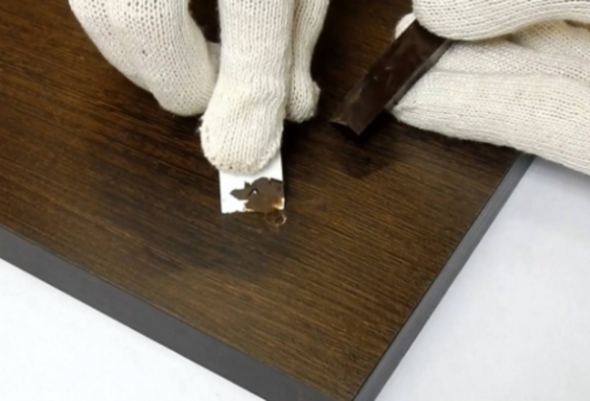
The wax is able to give the tree a new life, improve its quality characteristics and appearance.
Such a mixture cannot be replaced with paraffin or other analogues painted in the desired color, since its texture and properties are different. Such a tool is securely fixed in the cracks and is not washed out.

The wax is practically not oxidized, and therefore is able to maintain its properties for hundreds and even thousands of years.
Content
Types of furniture wax
Mixtures are divided into the following types:
- Soft;
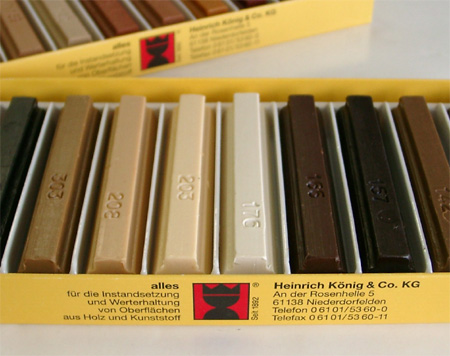
Soft wax imparts smoothness to wooden surfaces and provides the desired shade of wood texture.
- Solid;
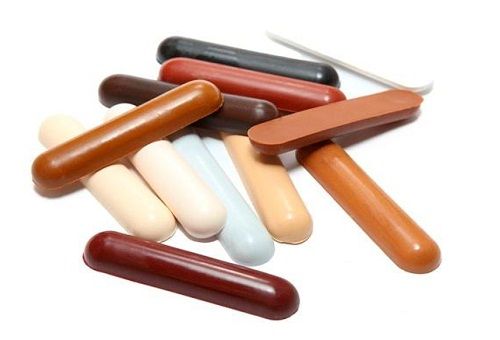
Such wax is preheated to make the material for wood softer, and the application - more quality.
- Liquid.
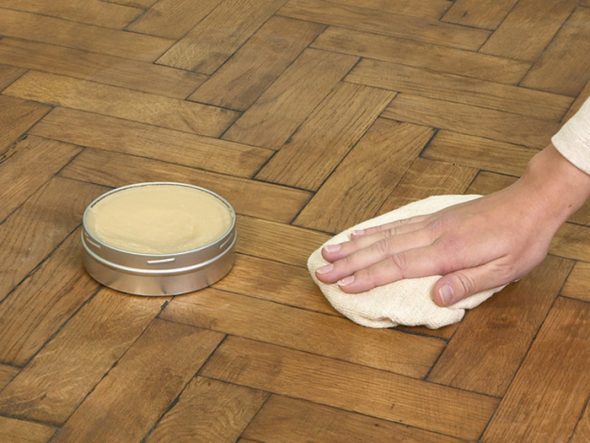
All corners, carving, chamfers are impregnated with such wax with maximum efficiency.
Soft is used if you want to update the look of the furniture and give it a more attractive look, remove small scratches and small cracks, repair shallow dents and chips.
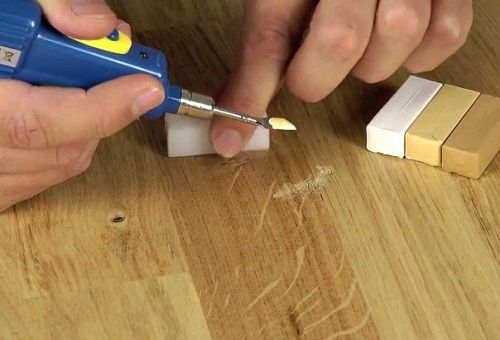
This type of tool is quite simple to use.
Before applying it, it is necessary to prepare a place for processing - wipe dry, remove paint or varnish residues, if any. Then the tool is applied by rubbing in the required amount and left for 25 minutes.
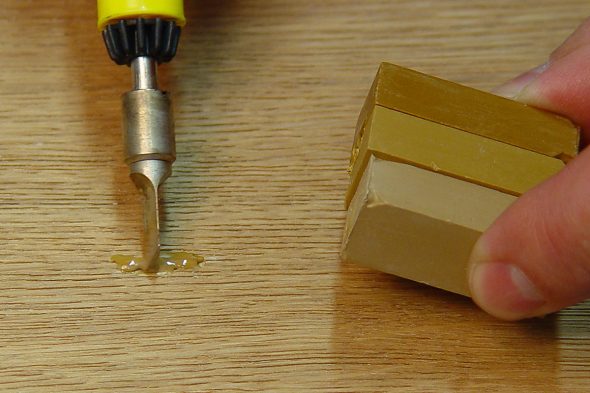
The main advantage of this coating is that the wax penetrates the wood and does not remain on the surface.
The excess is removed with a knife, and the treated area is polished with a felt cloth or cotton cloth. If scratches are significant, then the aging time can be increased.

This type has a richer palette of colors than a solid look.
Hard wax performs the same restoration functions as a soft one, but this material gives a greater effect while eliminating deep damage due to a thicker and denser consistency. The best aesthetic effect from the use of solid material is achieved due to its advantages such as high strength and resistance to mechanical stress.
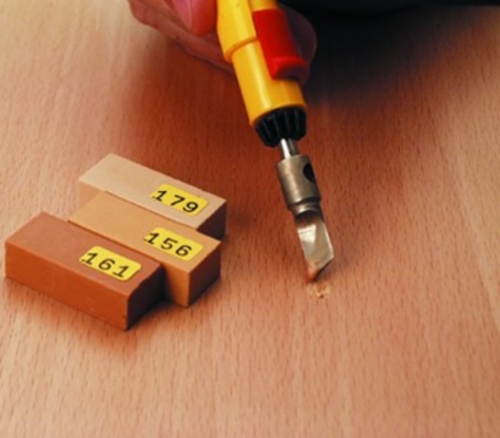
This coating is indestructible, even after many years.
It is more troublesome to use, but perfectly restores serious flaws. Before applying it must be melted and cooled for a few seconds for better adhesion. If necessary, remove the excess with a knife and wipe with a napkin.

The cost of this type of mixture is always higher than the soft, and it is not always easy to find in the free market.
As part of the liquid wax, synthetic additives are used, due to which the required liquid consistency is achieved. The advantage of this type is the ease of brushing, penetration into any cracks and scratches.
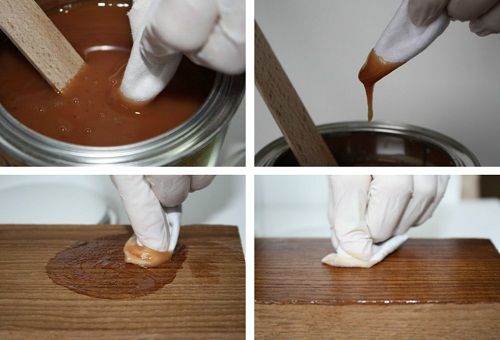
Liquid wax is applied and dries in minimal time. Just a couple of hours - and the furniture is almost ready for use!
Wax for restoration can be found in the form of pasty, creamy or oily mixtures, differing in composition, texture, method of application and the nature of the damage (scratch depth, etc.).
Advantages and disadvantages of using
Professional wax is an excellent solution if you want to update the appearance of the furniture, and, objectively, the advantages of this tool are much more than disadvantages.
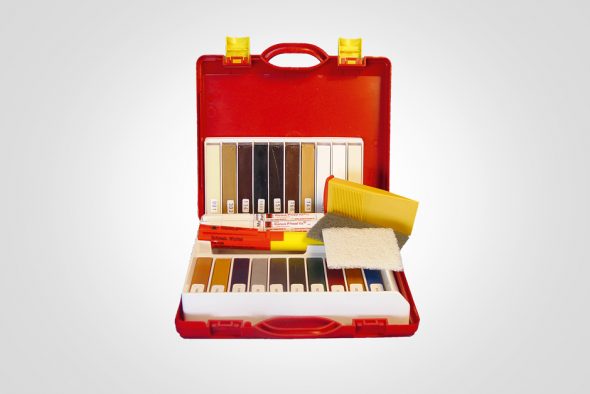
In addition, its use can replace lacquer, which in some cases contains harmful substances, is characterized by the presence of an unpleasant odor.
Among its advantages, it is worth noting:
- Good water-repellent properties;
- Removing chips, cracks, filling joints and giving the furniture a new look;
- Pleasant shine;
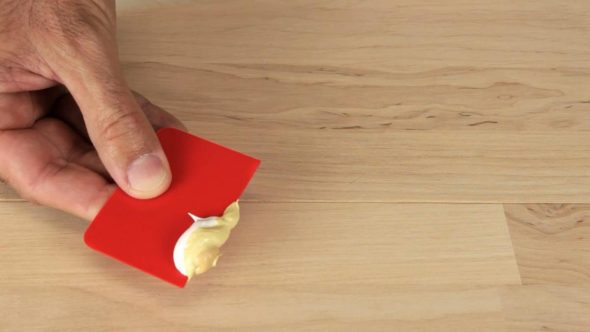
The wax-covered wood becomes silky and shiny.
- Environmentally friendly material and the use of diluents from natural ingredients;
- Preservation of the natural relief;
- The speed of absorption and drying;
- Variety of colors.
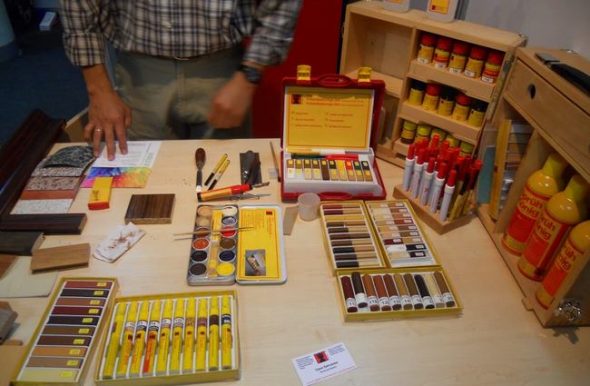
With the help of wax wood texture is perfectly restored, abrasions are removed, various kinds of defects, the color becomes rich and soft.
Among the shortcomings of the use of such funds emit low protective properties for furniture compared with varnish. In addition, they can not "cover the spots" that appeared under the influence of the best sun, moisture and other factors.
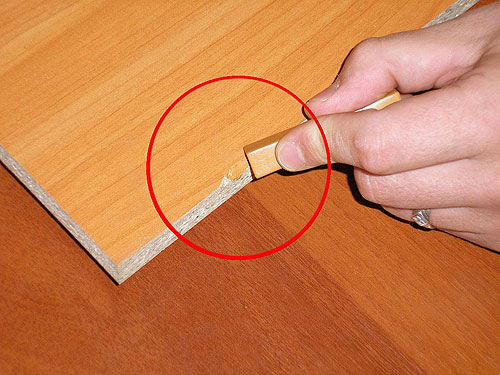
If there are stains, it is necessary to pre-bleach a wooden surface.
How to choose
The choice of restoration means depends on the color, type and composition.The color palette is quite impressive.
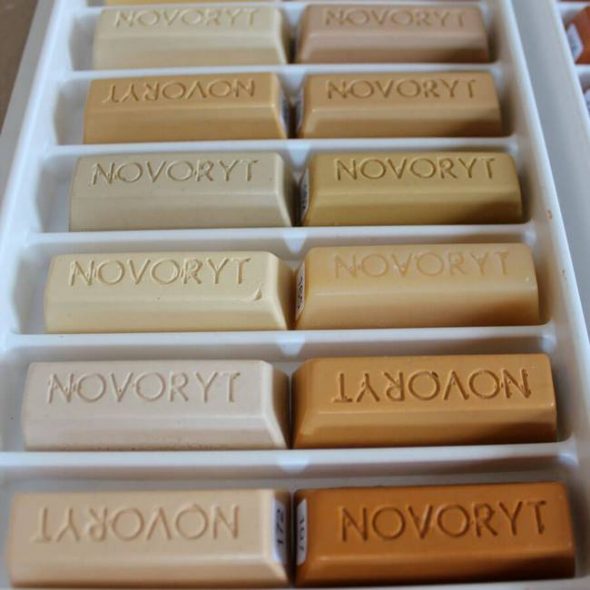
Finding the right color is easy.
Almost all types in the base have one composition, containing natural natural substances:
- Wax (bee or carnauba);
- Oils (olive, linseed, etc.);
- Softwood esters;
- Wood resin;
- Drying oil

To give the desired consistency and properties add artificial solvents, UV filters and other additives.
The choice of consistency depends on the area of the damaged surface, the depth of cracks. Liquid wax is suitable for shallow multiple scratches.
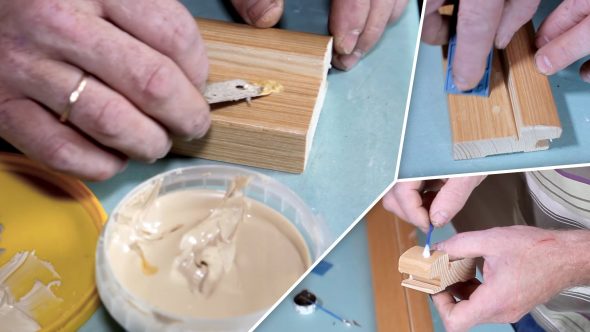
It is much simpler to apply liquid wax, than firm - at the same time sites will be evenly covered.
It is better to choose a solid mixture if the chips and cracks are large and require careful restoration.
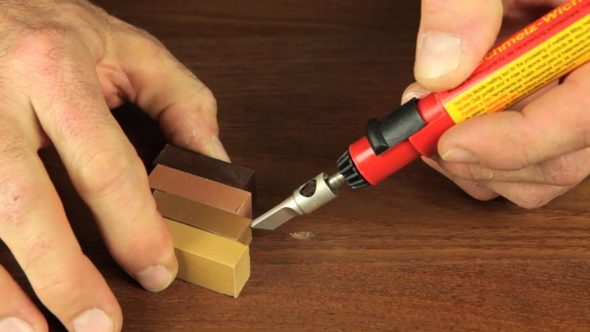
Apply the wax by simply pressing into the surface and then rubbing it with a spatula.
Soft valued for a rich color palette, ease of use.
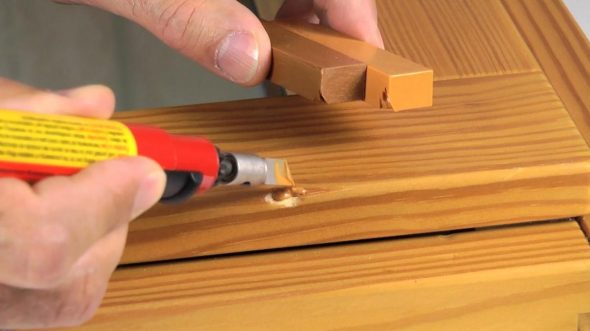
The color is quite stable and will not be erased with time.
Wax is produced in different forms. To remove minor damage will be convenient to get a wax pencil.
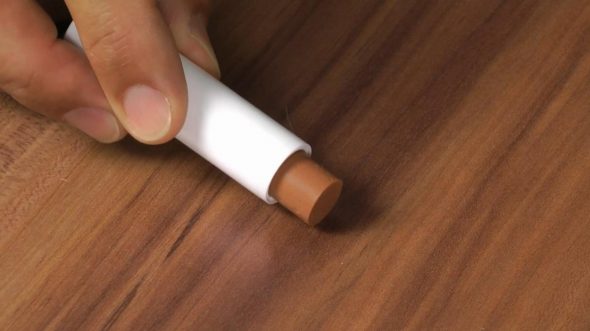
Wax pencil is the simplest and most economical solution for furniture restoration.
For processing large areas it is better to purchase bulk packaging.
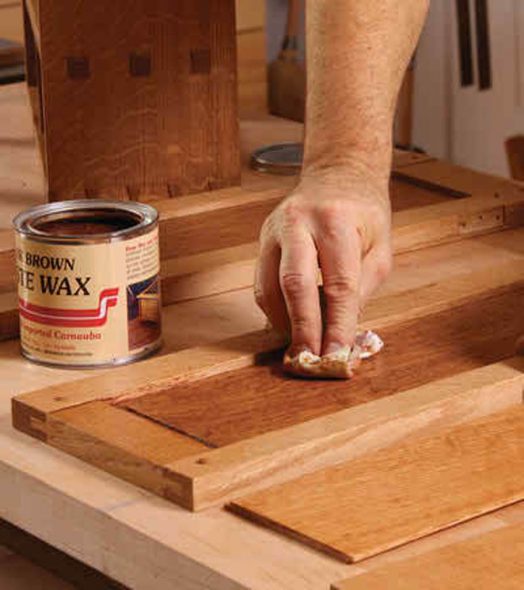
The smudges and irregularities with this type of processing are completely excluded.
How to use
In order for the product to be well absorbed into the wood, it is necessary to prepare a restored place. To do this, remove the dust. Remove the coating from the varnished or polished surface with a solvent.
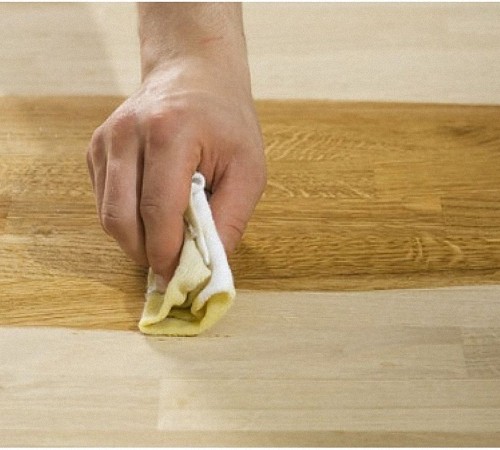
If necessary, wood is bleached.
Depending on the type of wax, various tools are used for its application: a spatula, brush, brush, etc. The prepared composition is applied with a very thin and even layer. It is better to leave any mixture on the surface for at least an hour for better adhesion and solidification. Remove excess with a knife and polish with a napkin.
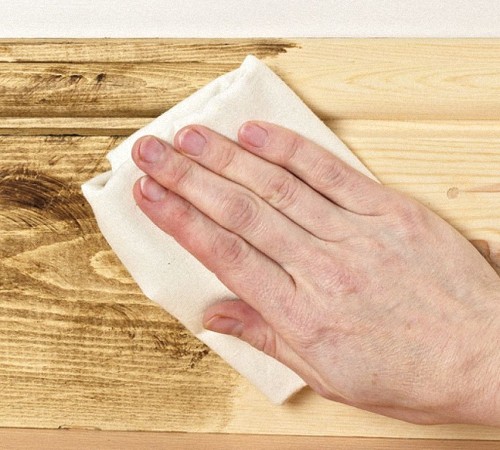
To achieve a beautiful shine, processing should be carried out twice.
Professional wax is able to breathe new life into old furniture, saving it from such defects as cracks, chips and scratches. Today, it is increasingly being used not only for restoration purposes, but also for decorative purposes, processing new furniture. It has water-repellent properties that protects against damage for many years.
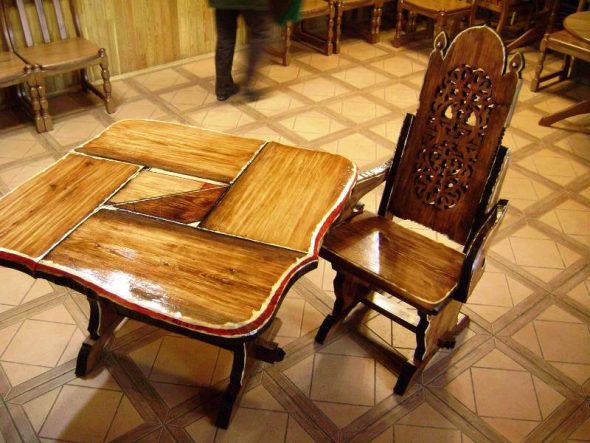
Wax gives the furniture a beautiful shine and allows you to save the relief and natural woody pattern.
VIDEO: How to seal the damage on furniture with wax.
Types and application of furniture wax - 50 photos:
 Keyboard with your own hands: from idea to realization
Keyboard with your own hands: from idea to realization
 The stapler is furniture. What it is and how it works.
The stapler is furniture. What it is and how it works.
 How to paint furniture from MDF at home
How to paint furniture from MDF at home
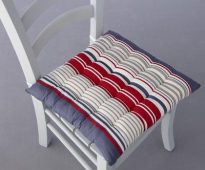 Making pillows on the chairs with your own hands
Making pillows on the chairs with your own hands
 A drill for furniture hinges: what is it and how does it work?
A drill for furniture hinges: what is it and how does it work?
